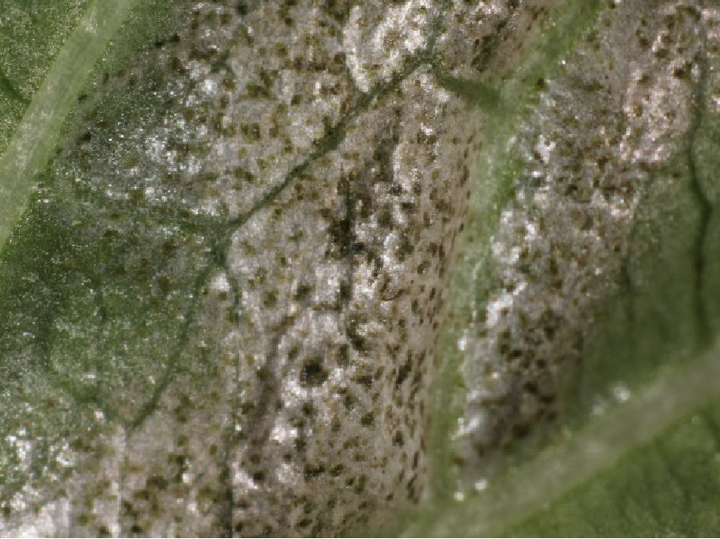Melon thrips
Thrips palmi
Appearance


The melon thrips is a very slender insect, about 1mm long, with two pairs of transparent, sword-shaped, fringed wings. The body is yellow colored, only the tips of the antennae are brown. Typical features are the type of bristling of the cervical shield, the first abdominal segment, the wings, and an antenna with seven limbs.
The larvae have a similar body shape as the adults, but do not have wings and carry ringed antennae.
Biology
Thrips are usually discovered late on infested plants due to their hidden lifestyle. With their small, flexible bodies, they are able to stay in various natural crevices of plants (calyx crevices, flowers, etc.), and they also tend to stay on the undersides of leaves.
They have piercing-sucking mouthparts with which they pierce and suck plant cells. When feeding, they prefer young tissue, probably because it is softer and easier to pierce. Thrips do not produce honeydew like aphids, but merely deposit brownish or greenish droplets of feces.
The abdomen of females carries a ovipositor for piercing eggs into plant tissue. The eggs themselves are transparent, and virtually invisible in plant tissue. Occasionally, brown corking occurs as a reaction of the plants to the puncture and is then easily seen.
Thrips pass through two motile larval stages in their development, an immobile pronymph and a pupal stage in the soil. A complete life cycle takes about 14 days at 25 °C. Thus, melon thrips can produce numerous generations per year.
Damage symptoms

Thrips suck out superficially located plant cells, but also pollen. Sucking on leaves causes air to penetrate sucked-out cells, giving them a silvery sheen, which is why this symptom is also known as "silver sheen". When young plant tissue is sucked or serves as an egg-laying site, corking may occasionally occur. Droplets of feces are regularly found in the vicinity of feeding sites.
Propagation and transmission
The melon thrips can be very easily introduced via fruit, plants for planting and packaging material. In the stand, thrips can spread relatively quickly due to their good jumping and flying ability. To cover greater distances, they allow themselves to be carried along by moving air masses.
Economic importance
Thrips cause direct sucking damage and are carriers of various dangerous plant viruses (tospoviruses). Mass infestation can mean failure of up to 90% of vegetable crops, as this species tends to develop resistance to pesticides. There are fears that the pest could spread uncontrollably in greenhouses after movement to the European Union.
Prevention and control
Since thrips are very small animals, which have a hidden way of life, an infestation is usually discovered late. Therefore, a careful (young) plant control and monitoring by means of blue glue boards is recommended to detect an infestation in time. In addition to approved chemical pesticides (see list of pesticides approved in Austria), some beneficial insects such as predatory mites, predatory bugs or lacewing larvae are suitable for biological plant protection.
In the European Community, the melon thrips is listed as a quarantine pest. The occurrence of the melon thrips or the suspected infestation of host plants by the melon thrips must therefore be reported immediately to the official plant protection service of the respective federal state.
Phytosanitary status
Thrips palmi is listed as a Union Aquatic Pest (UQS) and is thus subject to legal regulations to prevent its introduction and spread into or within the member states of the EU.
Last updated: 12.09.2024
automatically translated